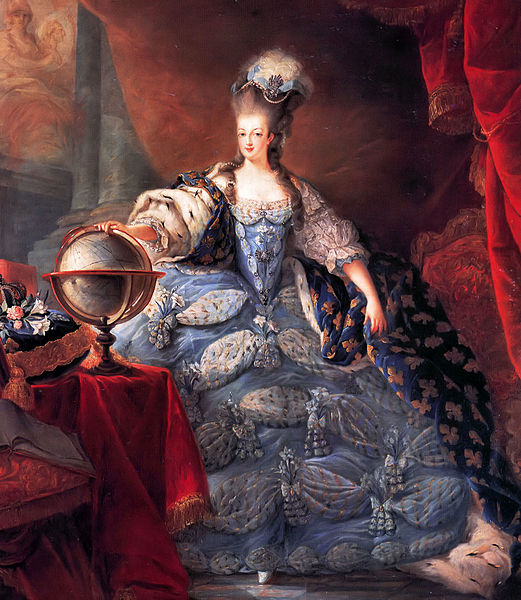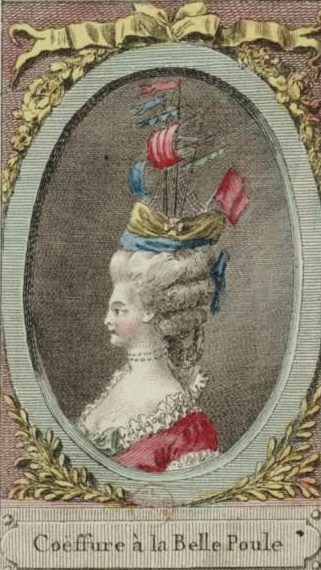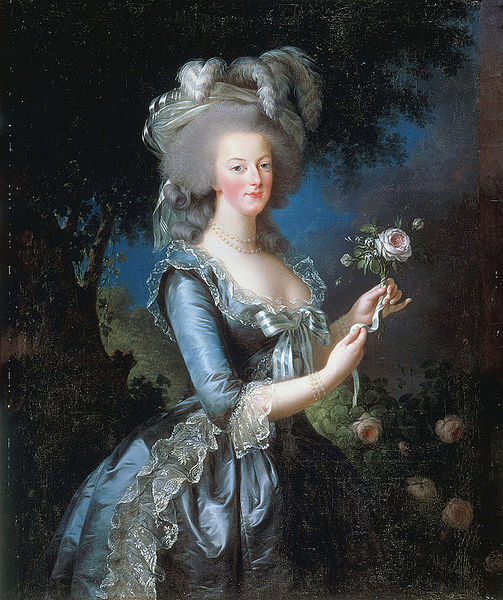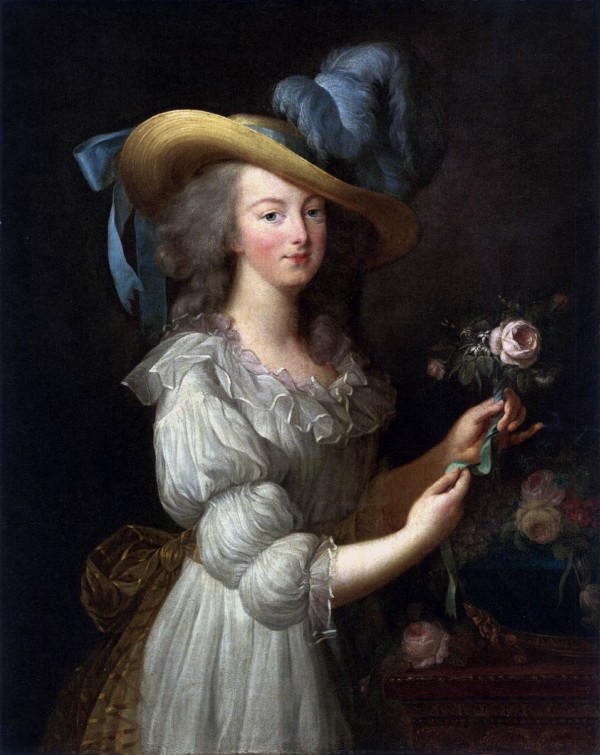But where is exquisite wearable art to be found in London today if it's not in "premier luxury retail"? It doesn't matter that the prices are out of my reach - the famous department stores have the power to inspire us all by showcasing the best, not dumb fashion down. Capitalism is failing in its moral justification to broker beauty. Producing and buying expensive stuff for the sake of its cost alone is not enough; wealth is not its own reward.
Jean-Francois Janinet, Marie Antoinette, a print after
Jean-Baptiste-André Gautier-Dagoty
France, 1777. Mixed method colour print on two sheets of paper. © Trustees of the British Museum
Good taste and beauty are not always the same thing, of course. One implies reason, order, restraint - the other can be terrifying....
I don't want to admit the possibility that great fashion design is extinct, only that it's in hiding. Like Frasier and Niles breaking through the silver and gold doors in an exclusive gentlemen's club, convinced that a chosen few are keeping the best for themselves, I wonder if there is always another, secret, place where heaven waits. The two proudly self-proclaimed elitist brothers, deluded on their quest, penetrated what they though was a platinum portal only to find it was the aluminum door to the garbage yard.
*Exception: Alexander McQueen. There's a V&A exhibition coming up in 2015, called Savage Beauty.
WALKING ART SHOW OR ANCIEN REGIME ATROCITY:

Marie-Antoinette in coronation robes designed by Rose Bertin, painted by Jean-Baptiste Gautier Dagoty, 1775. Oil on canvas, Versailles. Image source: Wikipedia
Like an actress, Marie-Antoinette wasn't showing off herself, she was showing off an idea, a mood, a zeitgeist, a role, in her case being queen of France and of fashion in the late 18th century.

- Queen as art exhibit: coiffure in honour of the French frigate Belle Poule
after its victory in the American War of Independence, 1778. Image source: Wikipedia
The French revolution in fashion was led by the queen and her fashion"minister", Bertin. After a few years of collaboration in artificial excess, they adjusted to the aesthetic and philosophical spirit of the times by promoting a simpler, more natural form of dress.

- Moving towards enlightenment: a more mellow, elegant Marie Antoinette, communing with nature, portrayed by Vigée-Lebrun, her other favourite image-maker, in 1783.
Image source: Wikipedia

- The shock of the new: Marie-Antoinette painted en chemise, again by Vigée Le Brun in 1783. Image source: WGA
